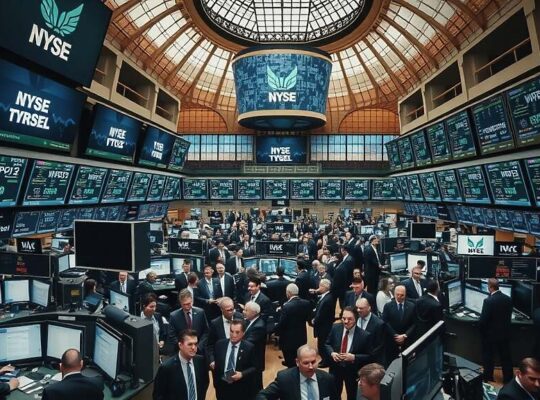US markets rallied on Friday, demonstrating a resilience seemingly bolstered by tentative signals of eased trade tensions with China, even as anxieties surrounding the potential for a new banking crisis linger. The Dow Jones Industrial Average closed at 46,191 points, a 0.5% increase from the previous day’s close. The broader S&P 500 reached 6,664 points, up 0.5%, while the Nasdaq 100 climbed to 24,818 points, reflecting a 0.7% gain.
The unexpected market uplift coincided with President Trump’s announcement of a planned meeting with Chinese President Xi Jinping in South Korea within weeks. Trump, speaking at a joint press conference with Ukrainian President Volodymyr Zelenskyy, characterized the ongoing trade discussions as “going well” and emphasized a perceived positive personal relationship with Xi. Earlier statements to Fox News suggested a potential shift away from sustained tariffs on Chinese goods, further fueling the brief sense of calm.
However, analysts caution against interpreting this as a complete resolution of either economic uncertainty or political tensions. The fragility of the market reaction underscores the persistent fear of a renewed banking sector downturn, already exacerbated by recent bank failures and ongoing concerns about systemic risk. While the prospect of trade easing offers a temporary reprieve, it doesn’t negate the underlying economic vulnerabilities within the US financial system.
The euro weakened slightly against the dollar, trading at $1.1670, reflective of a broader pattern of dollar strength as investors seek safe haven assets. Gold prices experienced a significant downturn, falling to $4,228 per fine ounce (-2.3%), driven by the positive, albeit fragile, market sentiment that overshadowed safe-haven asset demand. Meanwhile, oil prices saw a modest increase, with Brent crude rising to $61.29 per barrel, potentially reflecting broader recovery expectations in the global economy despite underlying geopolitical risks.
The brief market reaction highlights the inherent volatility within the current financial landscape and questions whether the perceived détente in US-China trade relations can genuinely offset the deep-seated concerns plaguing the banking sector and the wider global economy.












